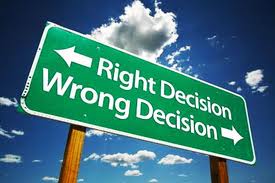I came across this book at FantasyCon two or three years ago. After meeting the author, and reading the blurb, I was sufficiently intrigued to want to read it. I thought the cover was pretty interesting too, and here it is.
Here is the blurb:
Lucky de Salle can see ghosts, but it’s daemons she should be worried about.
With no family and very few friends, Lucky’s psychic ability has always made her an outcast. The only person she can rely on is Kayla, the ghost girl who has been with her since she was born.
But Kayla is not all that she appears.
Then again, neither is Lucky…
MARKED is the first book in the Soulseer Chronicles and the debut novel for Ms Tingey.
It’s so hard to write a review of a book like this without it containing spoilers, but I’ll do the best I can. The action starts right at the beginning of the book and rolls on from there, gaining momentum with each turn of the page. The plot was certainly original and unlike anything I’ve read before. It was well planned and overall, the pacing was good. The writing flowed seemingly effortlessly and there was no point at which I was jerked out of the story by the use of an incorrect word or the phrasing/sentence structure being off. I did notice a few small mistakes, but that was obviously down to the publisher/editor rather than the author. They were things that should have been picked up during editing or proofreading.
Many surprises appeared during the story, none of which I saw coming, and that added to my enjoyment of it.
The author crafted her characters like an artist creates a masterpiece! Whether a leading character, or a minor one, each had a different personality and it was so well done that it’s hard to believe this is a debut novel. All her characters were believable and relatable – even the baddies.
Lucky de Salle – the lead protagonist: She is so realistically designed, I could relate to her immediately. Yes, she can see the dead and is psychic, but in the normal course of events, it doesn’t faze her at all. However, not all the ‘dead’ are friendly and when she comes up against her first daemon, she is petrified. She can be feisty, stubborn, vulnerable, frightened, and normal; these are all traits everyone can relate to in one way or another, and it makes Lucky more real for me. Yet there’s much more to Lucky than I’m going to reveal here as I don’t want to spoil anyone’s enjoyment of it.
Jamie – a leading protagonist: Known as ‘The Guardian’, Jamie is Lucky’s protector. He was a bit of an enigma for me. Most of the time, he appears kind and gentle, and obviously seems to have some feelings for Lucky. Yet, he can also be frightening, secretive (much to the chagrin of Lucky), and has a bit of a wicked streak. By the end of the book, very little is known about him or what it means to be ‘The Guardian’. I’m looking forward to learning more about him in book two.
Jinx – a leading protagonist: He is known as ‘The Deathbringer’, the polar opposite of ‘The Guardian’. I loved this character! Jinx is a cheeky daemon who is enrolled in Lucky’s guard. It becomes obvious early on that he fancies her. He’s generally happy, smiles a lot – Lucky often receiving mischievous or inviting ones – yet there’s a dark side to him which one might guess from his title. He’s a bit more transparent than Jamie, but I feel he has hidden depths that haven’t been revealed so far.
Kayla – is another major character and Lucky’s best friend, even though she’s a ghost. She can be nice and supportive however, Kayla can be one hell of a bitch, and callous. She cares about Lucky a great deal and tries to protect her, but does she have her own agenda? You’ll have to read the book to find out.
Other notable characters – Lord Baltheza, Shenanigans, Kerfuffle, Pyrites, Amaliel Cheriour, and Vaybian.
Tingey uses description to good effect. You can easily picture a person or place in your mind and for me that adds a deeper dimension to the story. However, none of the portrayals or depictions are overdone.
In conclusion, this is a great debut novel. It’s gripping, unique, alluring, magical, and has a little romance thrown in. I loved this wonderful story and couldn’t put the book down. If you’re a fan of fantasy novels, I would highly recommend you spend some money and buy this. I’m sure that after reading it, you’ll be reaching into your wallet or purse to buy book two… I did and it’s a fantastic investment!
Look out for my forthcoming review of the second book in the Soulseer Chronicles – Cursed!
BUY THE BOOK FROM AMAZON: https://www.amazon.co.uk/Marked-first-magical-Soulseer-Chronicles/
MEET THE AUTHOR:
Sue Tingey is the author of the fantasy romance series The Soulseer Chronicles and lives with her husband in East Grinstead, West Sussex.
She spent twenty-eight years working for a major bank and, after taking voluntary redundancy in 2001, spent another fourteen or so years working as a practice manager for an arboricultural consultancy. She has now given up the day job to allegedly spend more time with her husband; he however has noticed that an awful lot more writing appears to be going on.
Sue admits that storytelling is her obsession and was thrilled when she was offered a three book deal by Jo Fletcher Books in 2014.
You can learn more about Sue on her website www.suetingey.co.uk or contact on Twitter @SueTingey


























